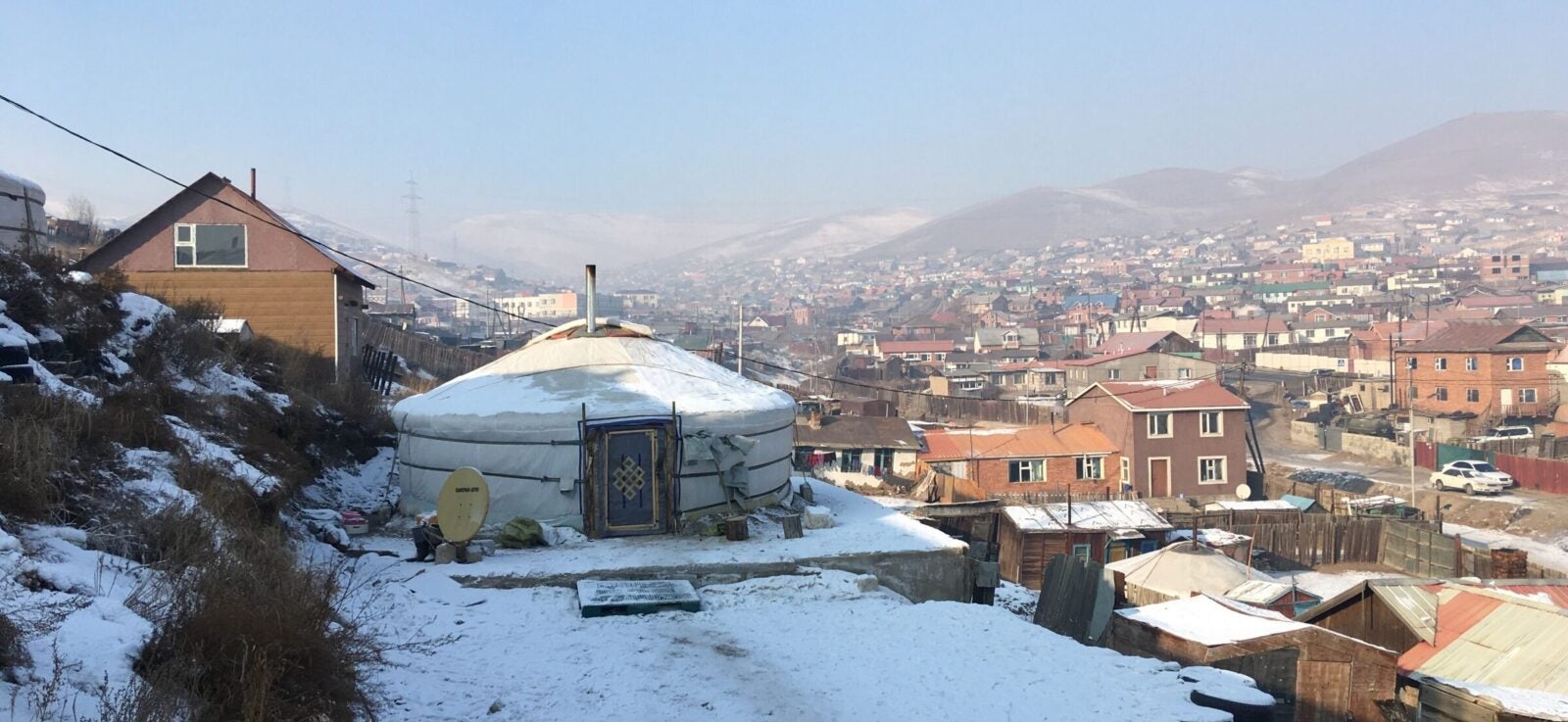Repowering Ulaanbaatar: Urbanization after Coal
While Mongolia has ample solar and wind resources, it also has an immense supply of state-owned, unregulated, cheap coal, and there are currently no credible plans for phasing out the use of coal for either electrical generation or thermal uses for the majority of the Mongolian population. As the air pollution in Ulaanbaatar has become a major public health crisis, a change in energy supply seems inevitable. But what will such a transformation look like, and how will it affect the form of the city? Spatial planning and design questions are central to long-term considerations for sustainable urban growth and energy transition in the quasi-informal ger districts of Ulaanbaatar. Currently, little thought is being given to the provision of municipal electrical supply, the siting of regional renewable generation and transmission, or local land use challenges such as flooding risk and water pollution. The goal of this project is to help envision what the transition will look like and how it will affect the urban form and communities of Ulaanbaatar.
Grant Result
In the wintertime, Mongolia’s cold capital city faces horrific air quality that has become a public health crisis. But saying goodbye to coal in Ulaanbaatar is not just an energy challenge, it’s an urban design challenge.
Read the Paper
Nicholas Pevzner
Assistant Professor, Department of Landscape ArchitectureNicholas Pevzner is a faculty fellow at the Kleinman Center for Energy Policy and an assistant professor in the Department of Landscape Architecture at the Stuart Weitzman School of Design.
Stephanie Carlisle
Lecturer, Landscape ArchitectureStephanie Carlisle is a lecturer in Landscape Artchiture in the Stuart Weitzman School of Design.


